Eh, Nah, Kinda
Various Riverside Parcels, Rocky Hill
August 2023
You come to Rocky Hill’s Ferry Park to do one of three things: Ride the historic Rocky Hill-Glastonbury Ferry, fish, or eat at the little seafood shack that may or may not exist when you read this. You walk north into the Great Meadows to go birding or farming, and you head south to Surwilo Park to… we’ll get to that one in a few minutes.
I went to all three one evening to hike. Or at least walk. Or attempt to. That’s really only possible at Great Meadows and, well… let’s see.
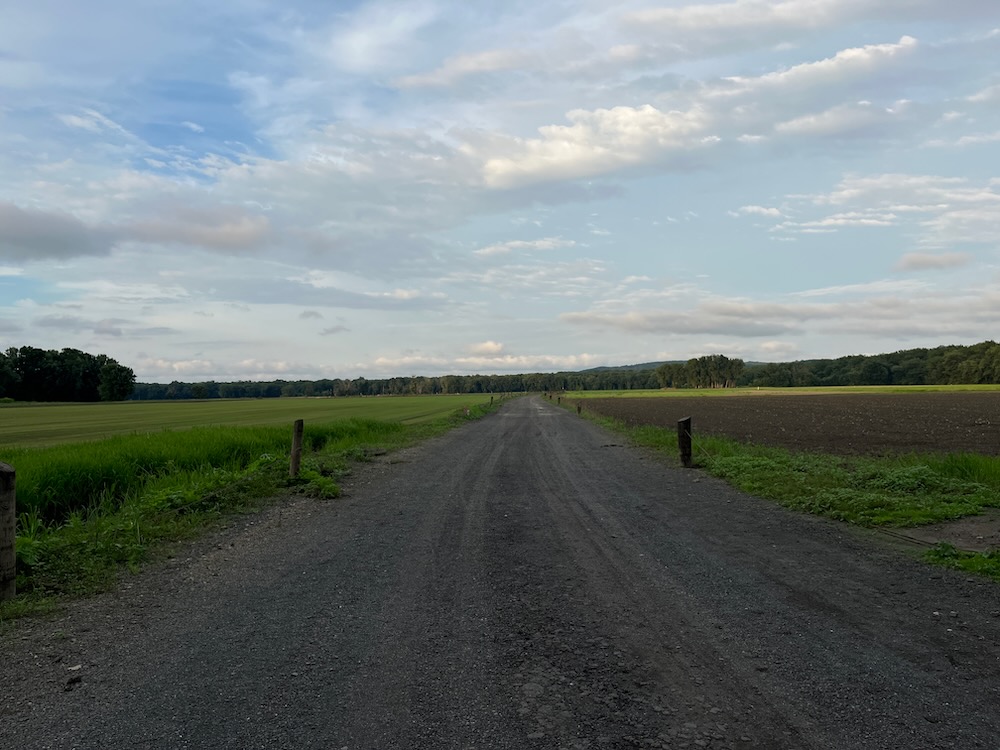
Great Meadows
The “Great Meadows” is very confusing. It is, as I understand it, a large swath of meadow along the Connecticut River south of Hartford. Ownership of this expanse is all over the place. There’s the Great Meadows Conservation Trust, multiple town governments, The Nature Conservancy, Glastonbury Sportsmen Association, Wethersfield Game Club, Rocky Hill Fish and Game Club. And oh, Goodwin College owns a large parcel in East Hartford and Wethersfield.
There are trails and/or bike paths on both sides of the mighty river, and you must plan your visits according to flooding as its all part of a floodplain in the four towns mentioned above. This floodplain contains rich farmland and a variety of habitat for wildlife. It is an oasis of green in the urban sprawl of Greater Hartford.
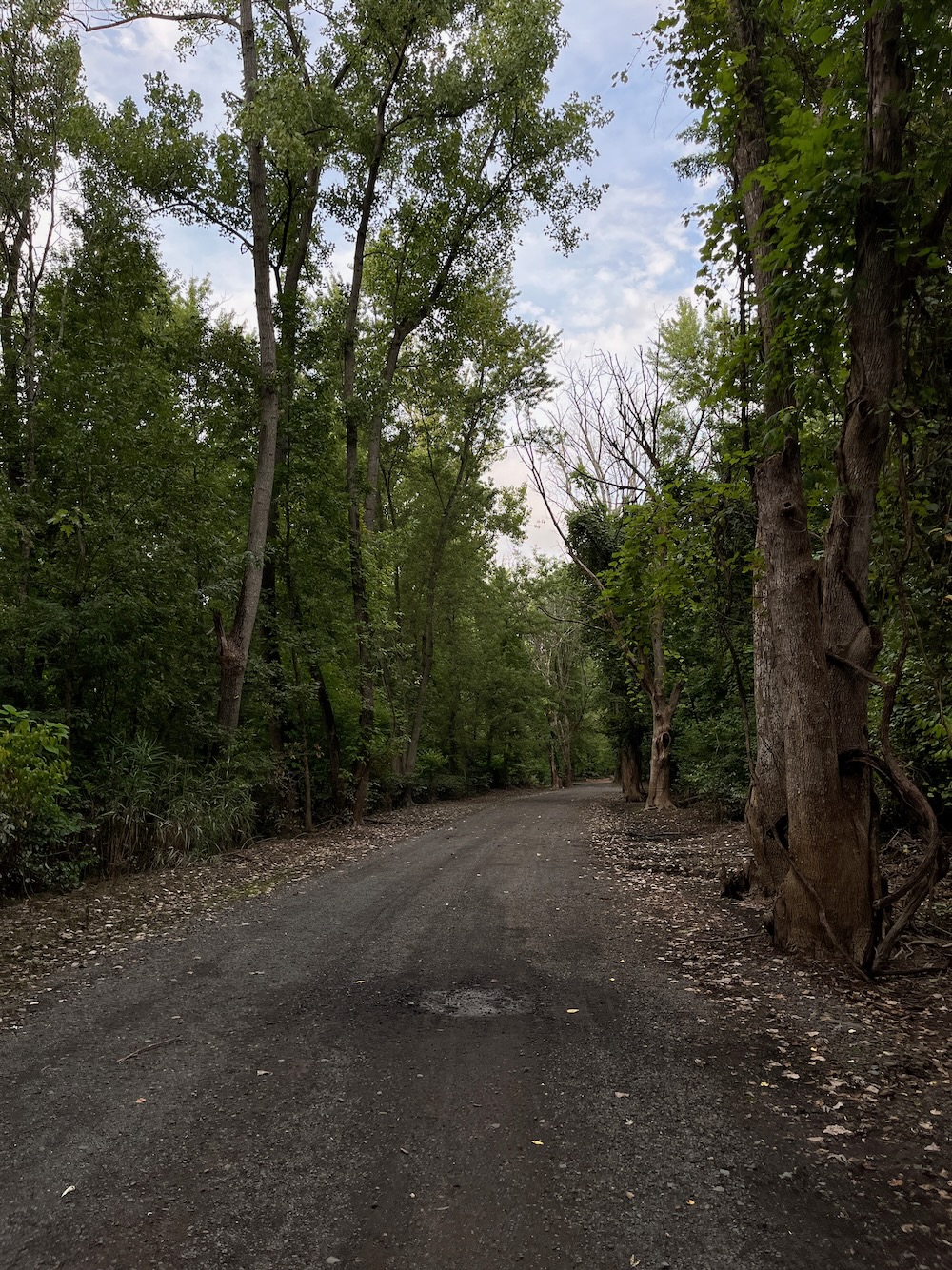
Audubon says:
Cultivated since prehistoric times, the farmland within Great Meadows, with its plentiful water supply, is some of the most valued in the world. The area also includes nearly 2,000 acres of floodplain forest, “key habitats of greatest conservation need” identified in the Connecticut’s WildLife Action Plan. Much of Great Meadows is just 4 to 5 feet above the normal river level. During annual spring floods, when river water is generally 10 to 15 feet higher than the normal, the area is mostly underwater. The mosaic of habitats and crops contributes to the great diversity of birds, as does the location along the CT River, which creates temporary large pools and puddles that hold substantial numbers of waterfowl for much of the spring, and provide excellent shorebird habitat as they slowly drain and dry up.
This all gets confusing if you’re looking for a place called “Great Meadows” though. (Because everything is called Great Meadows. Like, the Great Meadows Conservation Trust has a little trail at Great Meadows but here, immediately on the river next to Ferry Park, the signage said I was walking in Great Meadows and it appeared the the town’s Fish and Game Club held rights. But it was also an Audubon Important Bird Area. And then there’s all the private farmland. The Trust has a trail on their land in Rocky Hill a short ways away called Rocky Hill Meadows.)
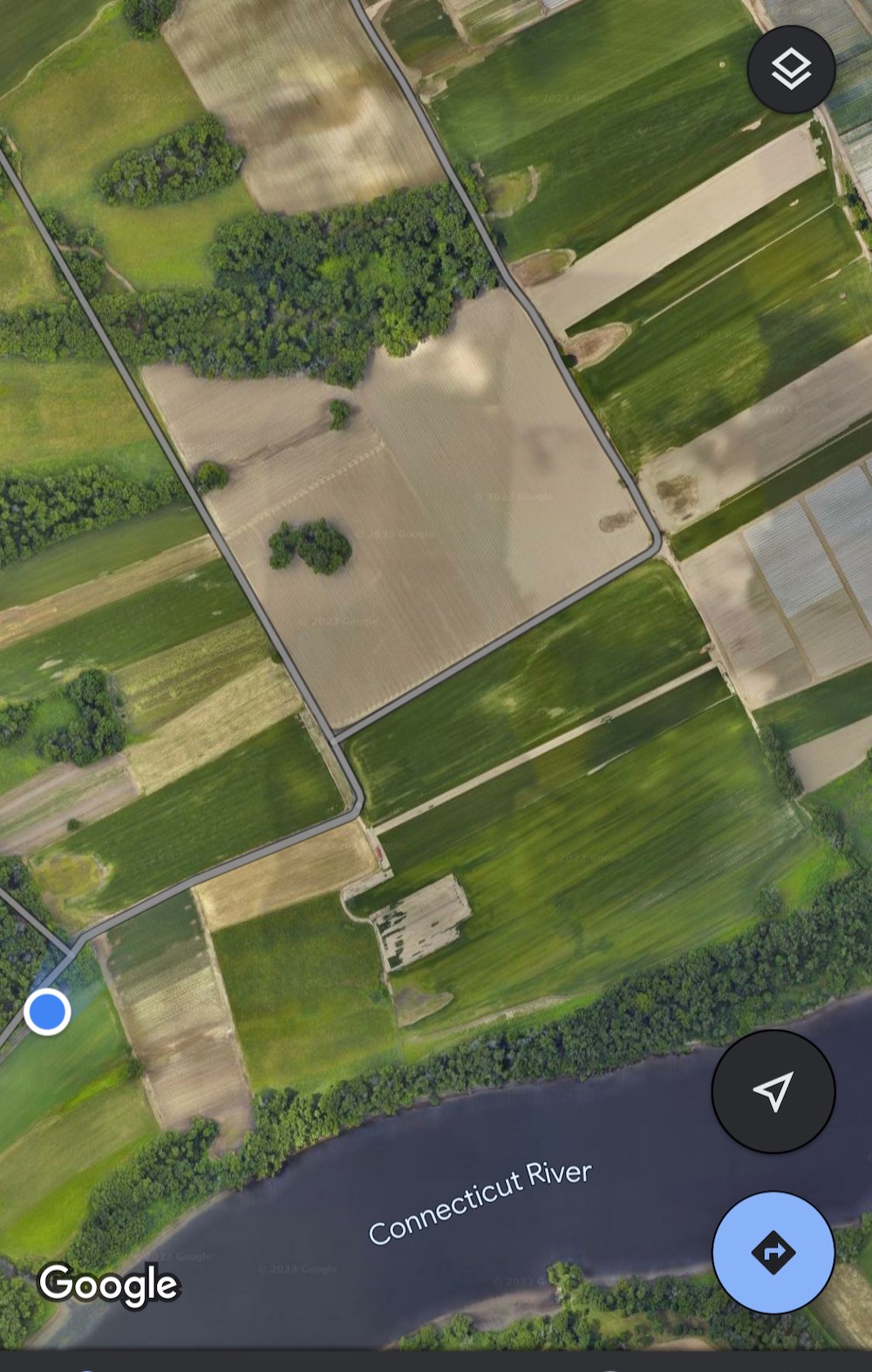
There I am in Rocky Hill!
In reality, it all more or less runs together but you won’t know when or where – nor will you care. Mostly because you won’t ever walk these oft-flooded farm paths and not for any other reason.
Though I did see two fit young runners and a birdwatcher – she had the full pocket-covered vest and everything. I walked the gated road through the woods to the fields north of the ferry. It’s very pretty and somewhat incongruous for somewhere so near Hartford. So that’s neat. You can walk or run the roads here all over this plot of land if you wish.
I didn’t wish. I got the point. This section of Great Meadows offers nice, flat, farm road walking through farmed fields.
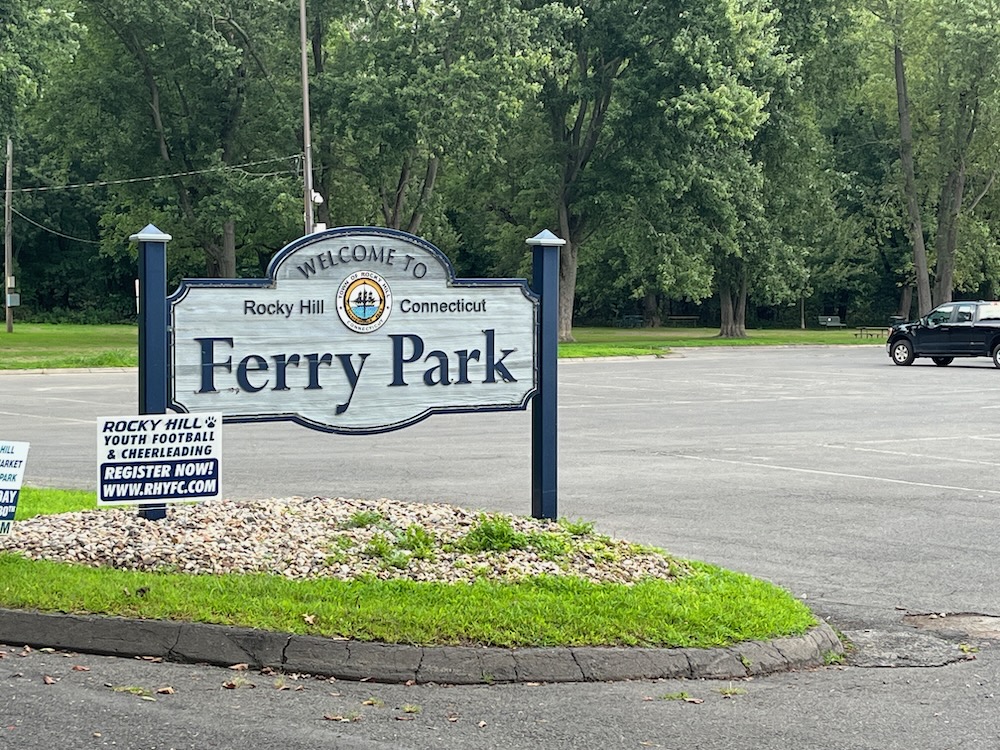
Ferry Park
Despite what the town of Rocky Hill’s official website says, there’s no hiking here at all. It’s lovely, and the ferry is cool, but nah. If you need to take a walk here, you walk the 500 feet north to Great Meadows.
It was nice to see the little restaurant doing a decent business on a random Thursday evening though. I know it’s been through a few owners and name-changes and legal battles for whatever reasons over the years. Seafood shacks are timeless and needed. Keep it going, Rocky Hill, keep it going.
Surwilo Park
The park itself is tiny and offers nothing beyond a grass lawn and a historic boat launch. But there are other reasons to come here.
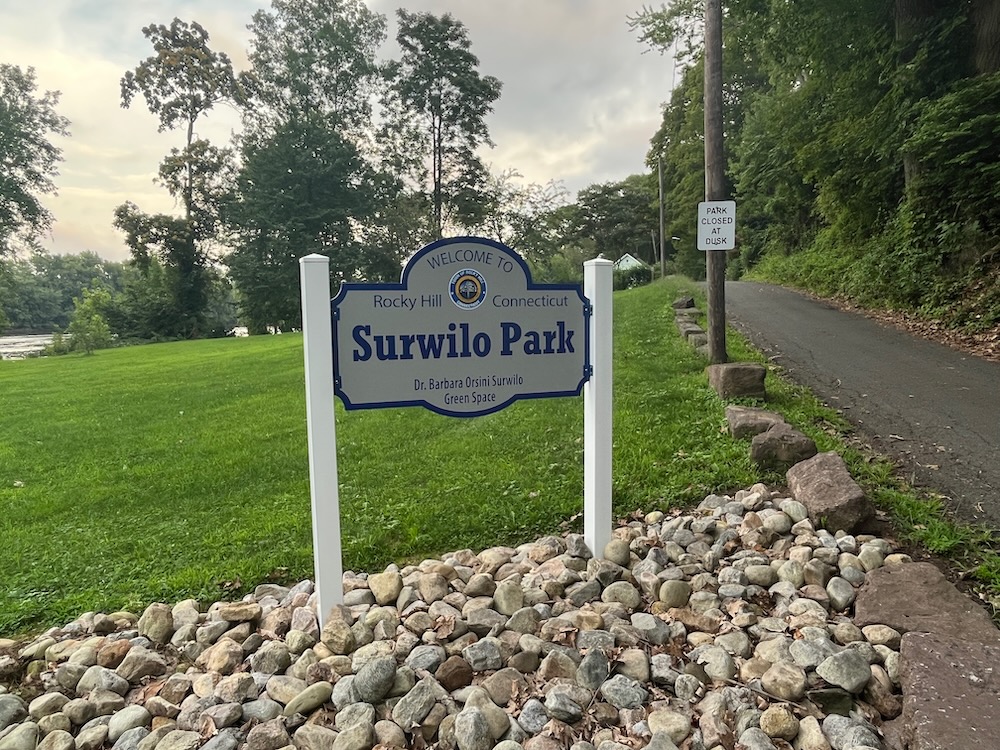
As of 2023, the road to get here is a trip in itself. On the way to the ferry slip, a sign points the opposite way towards Surwilo Park. (Note that in the future this whole area will be entirely different after mixed-use apartments are built here.)
Trust the sign despite the apocalyptic road. It passes near the old abandoned Rocky Hill Foundry site.
The Connecticut Foundry Company was established in 1865. The company built the Rocky Hill Foundry on the banks of the Connecticut River and produced a wide variety of goods, mostly made of cast iron. These items included oil burners, piston-ring moldings, lawn mower parts, cooking equipment, gun parts, and more. The Foundry had some well-known companies as customers including Remington Rand, Stanley, GE, Dictaphone, and others. Some items produced by the foundry can be viewed at the Rocky Hill Historical Society’s Academy Hall Museum.
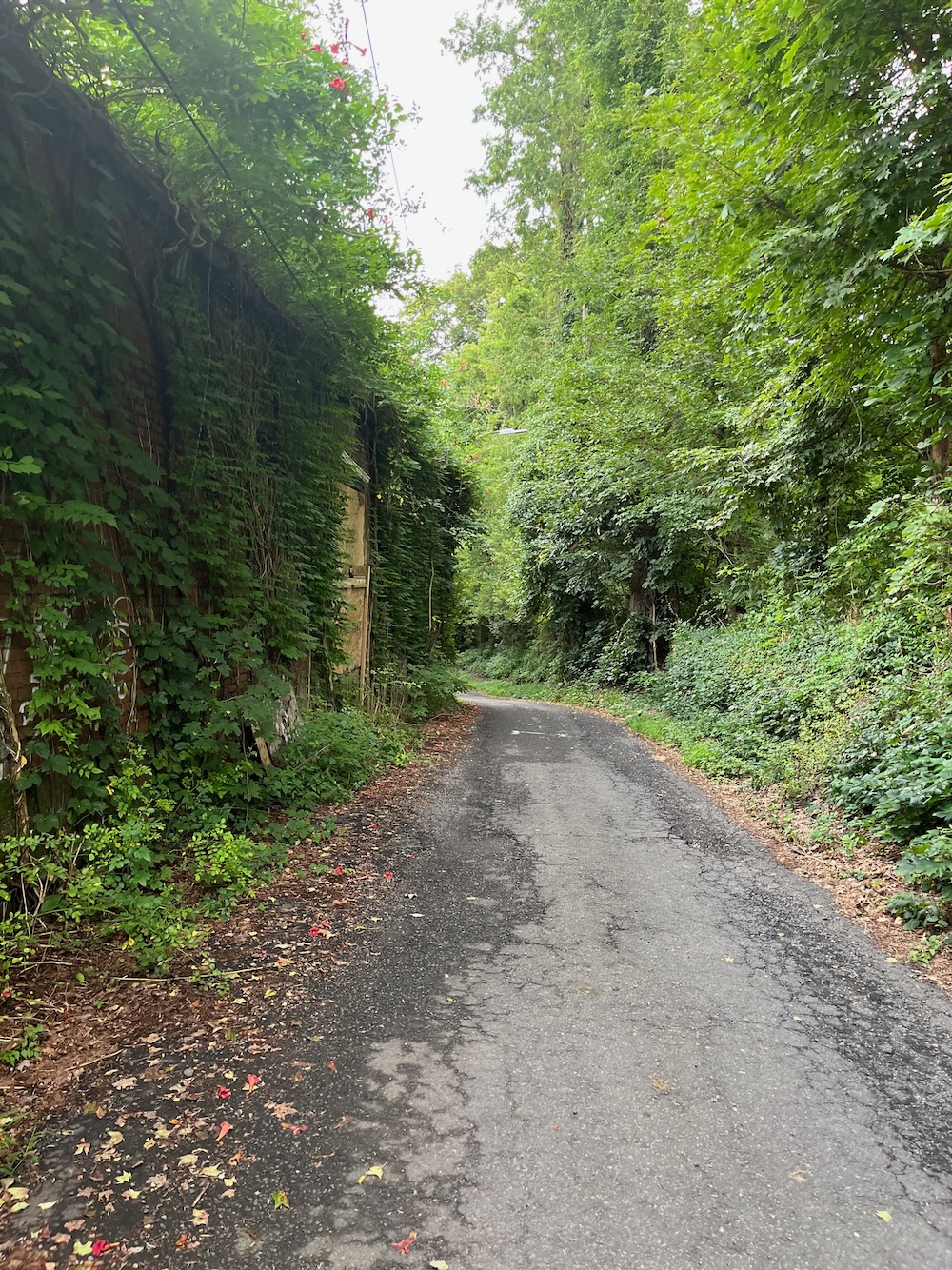
Huge silos were still standing when I drove by, but several of the buildings have been razed and remediation has begun. This has been an issue in Rocky Hill for decades, but it appears that it’s finally moving towards resolution: the plans are to build 78 apartments and an 8,000-square-foot commercial building with a 1,000-square-foot multi-purpose room for the town.
Once down the overgrown single lane track next to the train tracks, the 0.81 acre park appears on the left. It is small and allows parking for a few cars. There’s a nice sign explaining the history of shipbuilding in the area. There’s a rock with a plaque dedicated to Barbara Surwilo, and there are flat stones leading to the water which may or may not be centuries old (well, of course the rocks are millennia old, but their placement might have happened centuries ago). Shipbuilding boomed here after the Revolutionary War – thanks to a fortuitous change in course of the river.
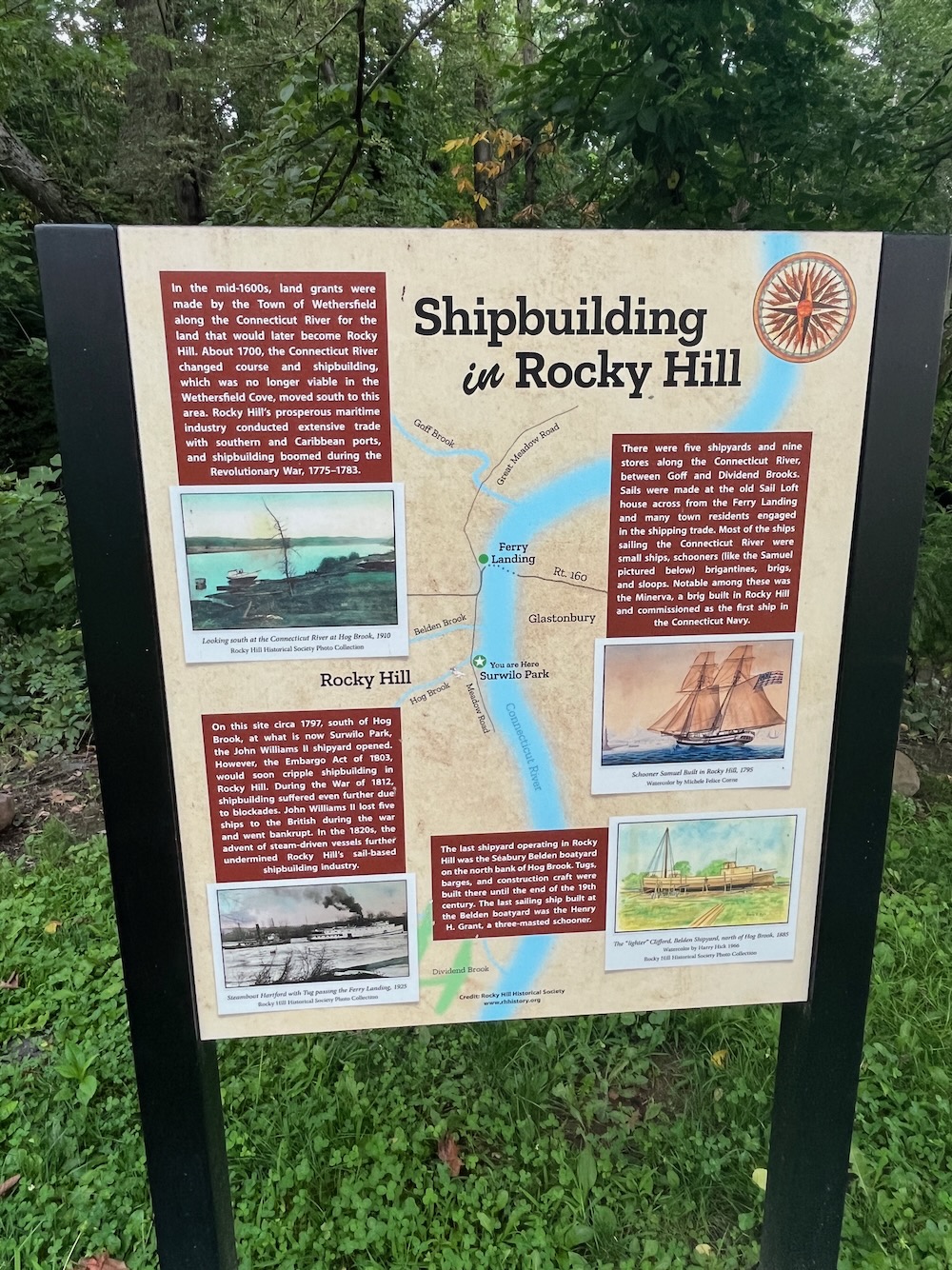
Alas, all that came to an end in the name of progress. From schooners to steamships to today, when most goods are transported on interstate highways. Enter: Barbara Surwilo.
You know the apocryphal story of Beatrice A. Fox and how the I-91/I-84 exchange in downtown Hartford was so bad for so long because supposedly G. Fox Department Store wanted everyone to have to slowly drive by its flagship store? That’s nonsense of course, but there is a woman who is actually more responsible for traffic jams in Hartford today than anyone: Barbara Surwilo.
Going way back to the 1930s, there was always a plan to build a beltway around the capital city. Decades passed until the 1970’s when the state began seriously planning such a beltway bypass highway (I-291). Parts of it exist today, but certainly not what was envisioned.
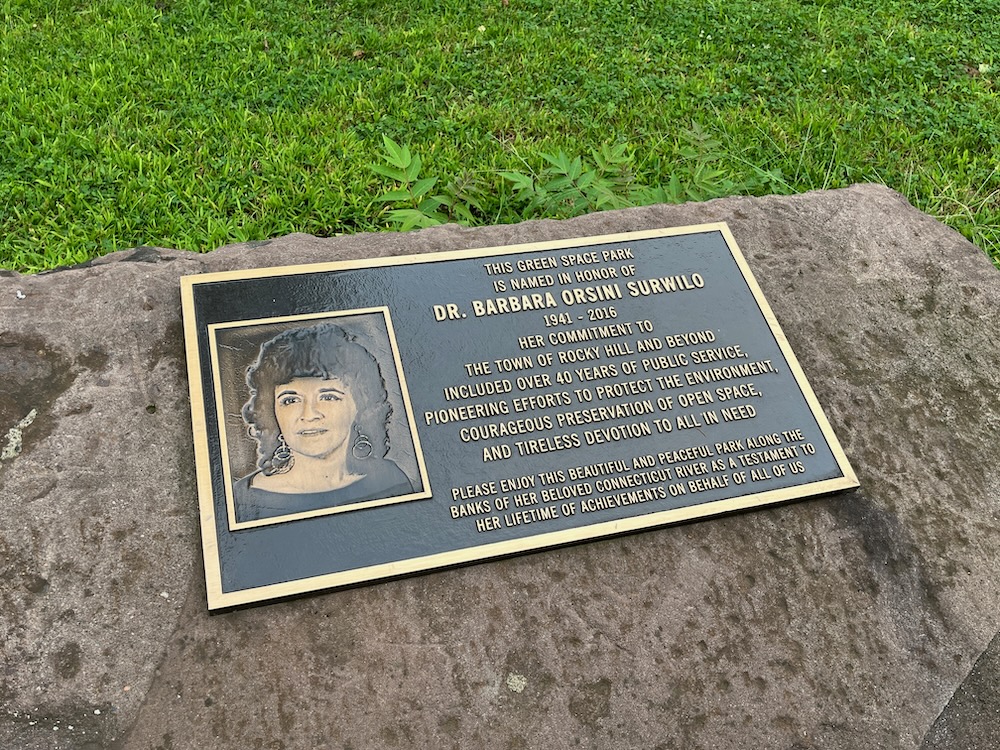
Excerpt from kurumi.com:
A history of I-291 would not be complete without mentioning Surwilo. In 1973, she and her husband moved there from Hartford, in a six-year-old house that happened to be a few hundred yards from one of the I-291/I-91 connector ramps. The real estate agent had said the ramp would never be used but a tip from a neighbor and a trip to town hall proved otherwise.
Instead of trying to unload the house, Surwilo stayed and fought I-291, spending an average of 30 hours a week on meetings and research. She had bachelor’s, master’s, and Ph. D degrees in biology, but the political fight called on other skills. Six years later, I-291 was cancelled. She was profiled in the Aug. 8, 1979 issue of the Parade Sunday supplement.
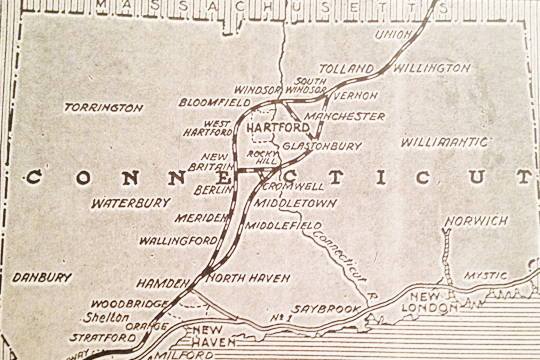
1937 plan
Surwilo later served four terms as Mayor of Rocky Hill and as of 2012 served on the town council.
The original planned I-291, a 20-mile western bypass from Rocky Hill to West Hartford to Windsor, is one of Connecticut’s most famous unbuilt highways. Opposition began in earnest around 1970, and that highway was cancelled in March 1979. There’s so much history with this bypass it’s ridiculous. Along with a proposed I-491 (also cancelled), the full I-291 proposal would have created a complete beltway around Hartford.
There’s much, much more at the incomparable kurumi. If the highway plan had come to fruition, Hartford County would be very, very different. The route would have gone through West Hartford near the reservoirs – which was the negative environmental impact that Surwilo cited to ultimately stop it.
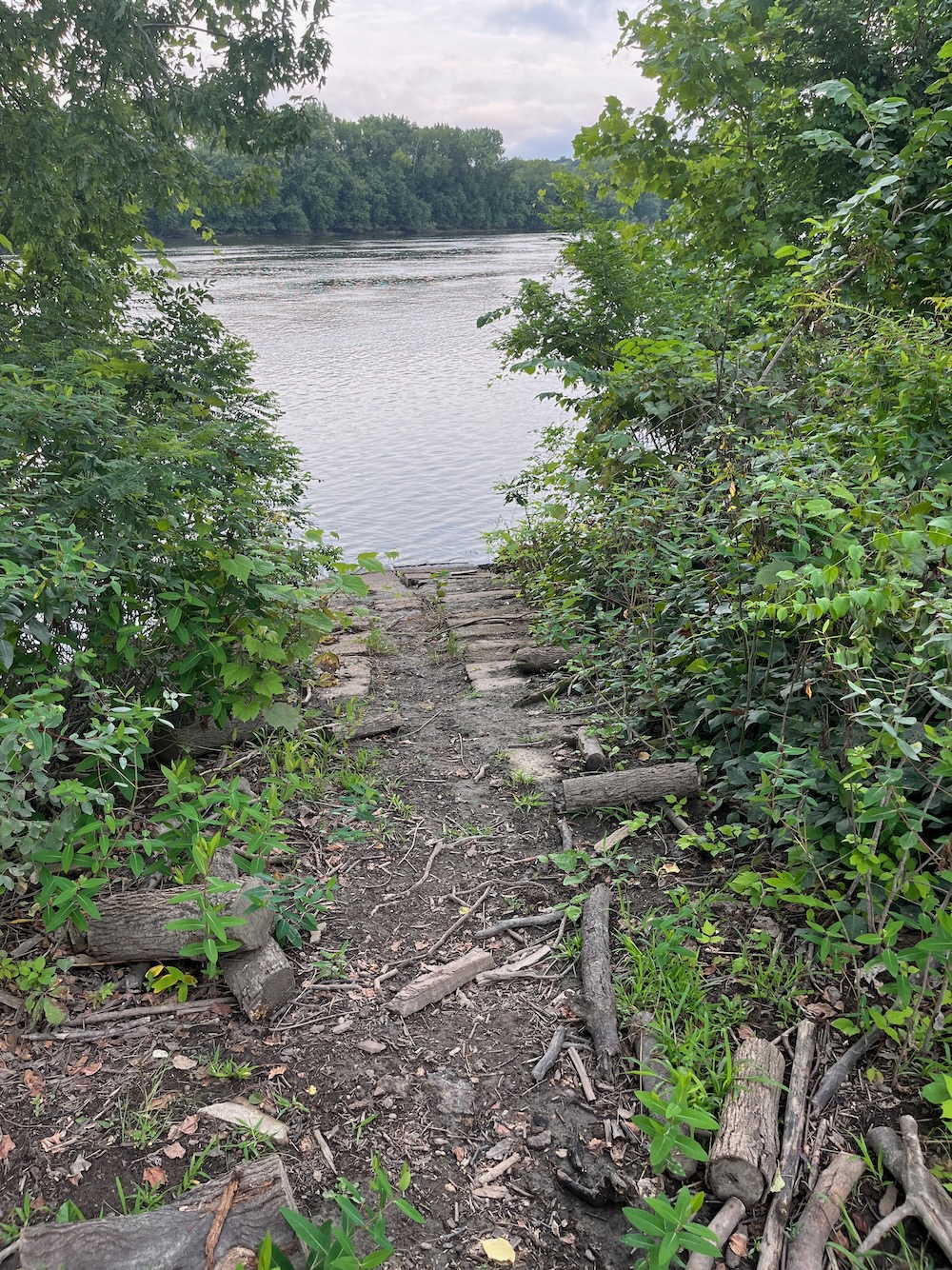
You can envision the path – from the current 291 north of Hartford today around and down to the crazy Ghost Highway Stack at Routes 9 and 84 in Farmington.
Surwilo passed away in 2016. She was a Hartford Circus Fire survivor, a tireless environmentalist, a double PhD in biochemistry and endocrinology, and a politician – among many other things. Her work defeating the I-291 project, and her farsightedness in advocating for creation of a fund to protect local open space and farmland, left their imprint on the town.
Cool. The tiny park is what it is, but the story behind it is so much more.
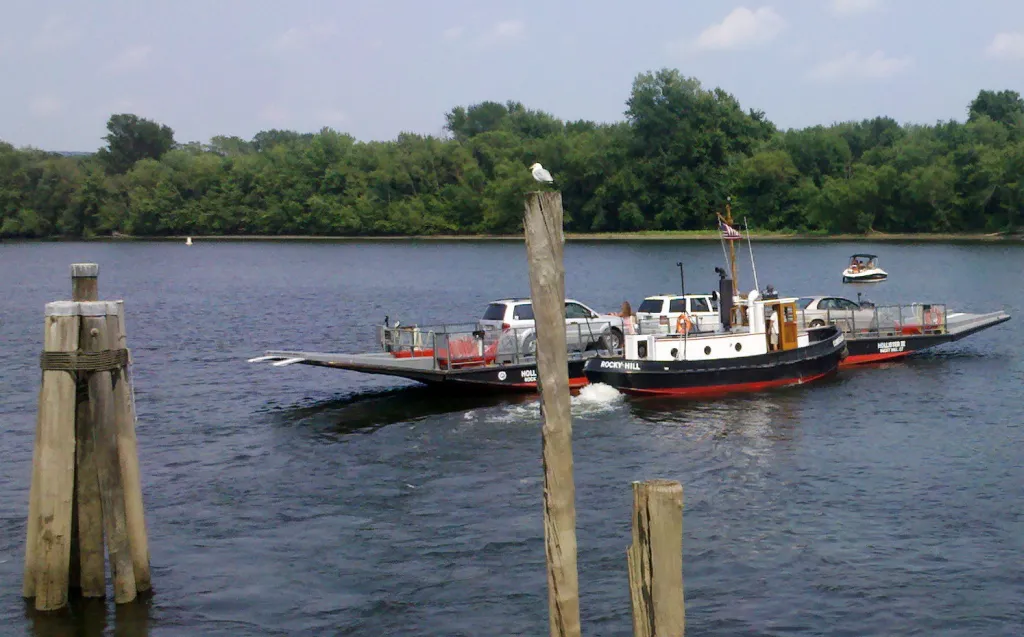
![]()
CTMQ’s Rocky Hill’s Town Trails
kurumi on the I-291 Bypass
CTMQ’s Highways, Roads, and Tunnels

 Tim Wolf says
Tim Wolf says
August 23, 2023 at 5:33 pmWhen not flooded, the entire area of whatever you want to call Great Meadow makes a nice, and different, bike ride. I’ve started in Old Wethersfield and gone under I-91 and past the office building that houses The River restaurant heading south. Soon you’re on sandy roads through the meadows past turf farms and cornfields and best of all, the Connecticut River. At some point you’re in Rocky Hill and you eventually get to the ferry landing. A couple of times I’ve taken the ferry across and continued my ride in South Glastonbury south a long the river. I probably wouldn’t want to walk the meadows, but it makes an interesting, flat bike route. Google Maps, All Trails or similar is indispensable in this area.